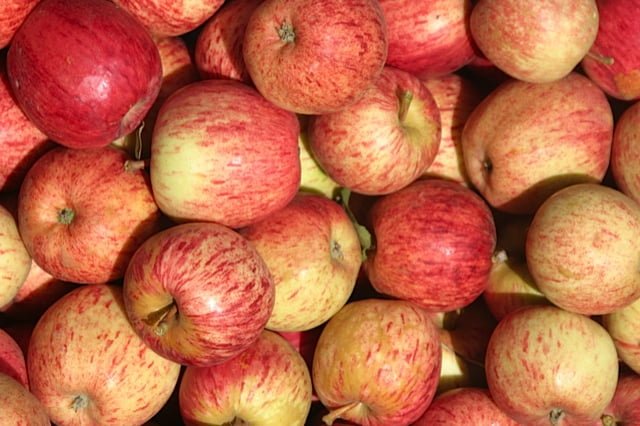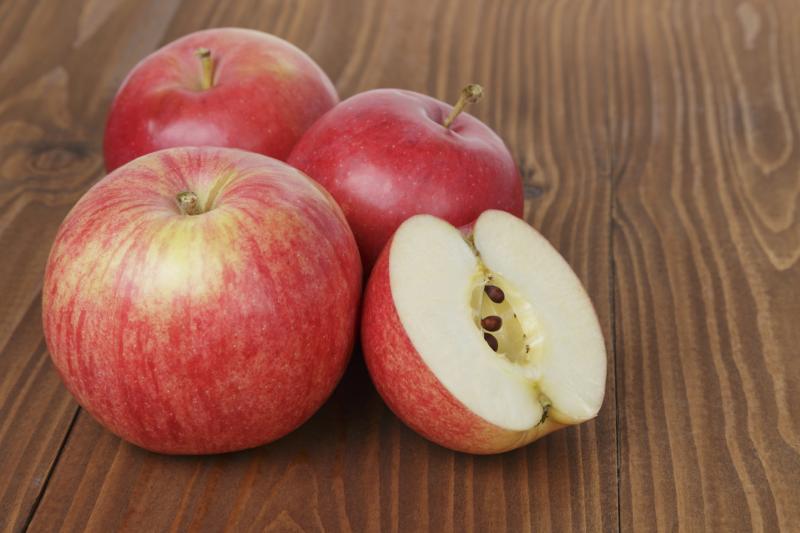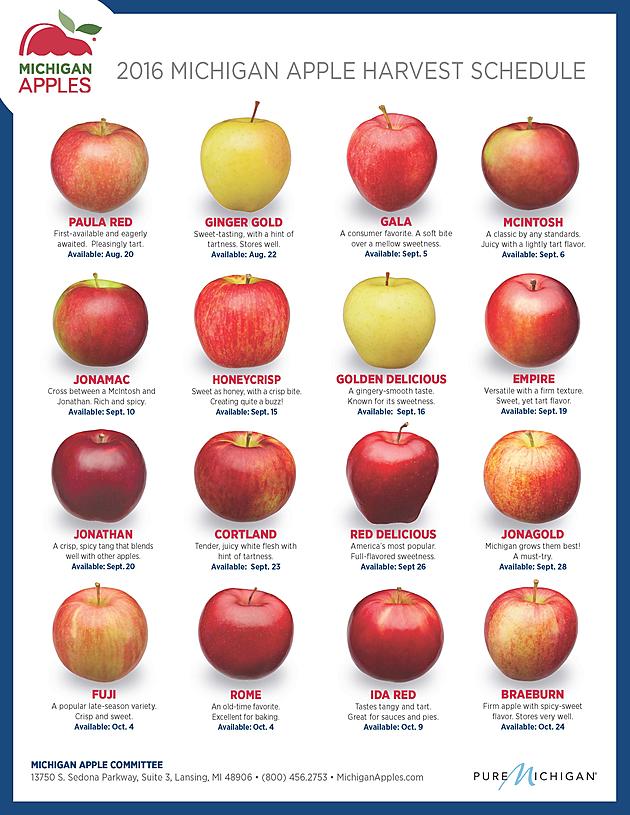Gala apples, one of the most popular apple varieties, are eagerly anticipated by both home gardeners and commercial growers alike. Known for their crisp texture, sweet flavor, and vibrant red skin with yellow undertones, these apples are widely enjoyed fresh or used in various culinary creations. However, the question remains: when exactly are Gala apples ready to be picked? In this article, we will explore the optimal timing for harvesting Gala apples, ensuring that you can enjoy these delightful fruits at their peak of perfection.

Factors Affecting Gala Apple Ripeness
Climate and Location
The climate and location where Gala apples are grown can greatly impact their ripeness. Gala apples tend to thrive in temperate climates with warm summers and cool, relatively mild winters. They require a certain number of chilling hours during the dormant period to ensure proper bud break and fruit development. Additionally, Gala apples prefer well-drained soil and typically grow best in regions with a good balance of rainfall and sunlight.
Tree Maturity
The maturity of the Gala apple tree itself plays a crucial role in determining when the fruit is ready to be harvested. Young trees may produce smaller, underdeveloped fruits that are not yet ripe. It is important to give the tree enough time to mature before expecting a bountiful harvest of fully ripened Gala apples. Typically, Gala apple trees reach their maximum fruit yield and quality around five to seven years after planting.
Growing Conditions
The growing conditions provided to Gala apple trees can significantly affect the ripeness of the fruit. Appropriate irrigation, fertilization, and pest control practices must be followed to ensure optimal growth and development. Insufficient water or nutrient deficiencies can result in smaller, underripe apples. On the other hand, excessive water or poor pest management can lead to diseases or insect damage, which can affect the quality and ripeness of the fruit.
Apple Varieties
There are various apple varieties within the Gala family, with some variations in ripening times. While the classic Gala apple is known for its early harvest, there are also newer varieties such as Royal Gala, which mature slightly later. It is important to note the specific variety of Gala apple being grown and its expected ripening timeline to determine the optimal harvest time.
Time of Year
The time of year also plays a crucial role in determining the ripeness of Gala apples. While the exact timing may vary depending on the climate and growing conditions, Gala apples are typically ready to be harvested from late summer to early fall. Monitoring the calendar and observing the signs of ripeness will help determine the ideal harvest time for Gala apples.
Physical Signs of Ripeness
Apple Size and Color
When determining the ripeness of Gala apples, size and color are important indicators. The apples should have reached their optimal size and have a vibrant red or yellow background color with distinctive stripes or patches. However, the color alone should not be the sole indicator of ripeness, as it can be influenced by different growing conditions and apple varieties. Size and color should be considered in conjunction with other physical signs to determine the readiness for harvest.
Firmness of the Fruit
The firmness of the Gala apple is another key factor to consider when assessing its ripeness. When the fruit is ready to be picked, it should have a firm texture when gently squeezed. If the apple feels too soft, it may be an indication of overripeness, while excessive firmness can suggest that the apple is not yet fully ripe. Achieving the right balance of firmness is crucial to ensure the desired texture and flavor of the fruit.
Stem Quality
Examining the stem of the Gala apple can provide valuable insights into its ripeness. A healthy stem that is still firmly attached to the fruit indicates that it is likely at the right stage for picking. If the stem appears withered or easily separates from the apple, it may suggest that the fruit is overripe or nearing spoilage. Checking the stem quality can help minimize the risk of picking apples that are past their prime.
Skin Texture
The texture of the skin on the Gala apple can also indicate its ripeness. A ripe Gala apple should have smooth, unblemished skin with a slight glossiness. Any wrinkling, bruising, or rough patches on the skin may suggest that the apple is overripe or damaged. It is essential to inspect the skin for any signs of spoilage before harvesting to ensure the best quality fruit.

Understanding Gala Apple Harvest Time
Days to Maturity
The days to maturity is a crucial concept when it comes to determining the harvest time for Gala apples. Each apple variety has a specific number of days from the blossom stage to optimal ripeness. For Gala apples, this period typically ranges from 120 to 150 days, depending on various factors such as climate, growing conditions, and tree maturity. Monitoring the number of days since blooming will provide an estimate of when the Gala apples will reach their peak ripeness.
Average Harvest Window
The average harvest window for Gala apples is generally around two weeks. This time frame allows for multiple pickings to occur as some apples may ripen earlier than others on the same tree. It is important to harvest the apples during this period to ensure the best flavor, texture, and overall quality. Waiting too long or harvesting too early can both negatively impact the taste and shelf-life of the Gala apples.
Harvesting Too Early
Harvesting Gala apples before they have fully ripened can result in a disappointing eating experience. Prematurely picked apples may lack the desired sweetness, crispness, and flavor that Gala apples are known for. Additionally, these underripe apples may not store well and have a shorter shelf-life. It is crucial to be patient and allow the apples to reach their peak ripeness before harvesting.
Overripening and Late Harvest
On the other hand, delaying the harvest of Gala apples can lead to overripening and reduced quality. Overripe apples tend to become mushy, lose their crispness, and develop a mealy texture. Such apples may also be more prone to spoilage and mold growth. It is important to closely monitor the apples during the harvest window and avoid leaving them on the tree for too long to prevent overripeness.
Testing Gala Apple Ripeness
Fruit Color Test
As mentioned earlier, color can be an indicator of ripeness, but it should not be relied upon solely. To perform a fruit color test, visually inspect the Gala apples and look for the characteristic red or yellow background color with distinct stripes or patches. Ideally, the apples should have reached their full color development before harvesting. However, remember to consider other signs of ripeness in conjunction with color to ensure accurate assessment.
Firmness Test
The firmness of the Gala apple can be assessed through a simple firmness test. Gently squeeze the apple with your fingers and feel the resistance. If the apple feels firm, it is likely at the right stage for picking. However, if it feels excessively soft or too hard, it may suggest that the apple is not yet ripe or overripe, respectively. Balancing firmness is key to achieving the desired texture and taste.
Taste Test
A taste test is a reliable way to determine the ripeness of Gala apples. Select an apple that appears visually appealing and ripe, then take a bite. A perfectly ripe Gala apple should have a perfect balance of sweetness and acidity, with a crispy and juicy texture. If the apple tastes overly tart or lacks sweetness, it may not be fully ripe yet. Conversely, if the apple tastes dull or excessively sweet, it may be overripe.
Starch Content Test
The starch content test involves cutting a small slice from the apple and applying a few drops of iodine solution to it. The color change in the exposed flesh can indicate the starch content and ripeness of the apple. At the ideal ripeness, the apple flesh will exhibit a slight creamy color, indicating a lower starch content. If the flesh turns dark blue or black, it suggests that the apple is not yet fully ripe and still has a higher starch concentration.
Harvesting Gala Apples
The Right Time to Harvest
The right time to harvest Gala apples is when they exhibit the desired combination of physical signs and ripeness tests. Using a combination of observations such as size, color, firmness, stem quality, skin texture, as well as taste and starch content tests, will help determine the optimal time to pick the apples. It is crucial to strike the right balance between ensuring the apples have reached their peak ripeness without risking overripeness or spoilage.
Proper Harvesting Technique
To harvest Gala apples, gently twist the apple upwards and give it a slight tug to separate it from the tree. Avoid pulling or forcefully detaching the apple, as this can damage the fruit or cause the stem to break off. It is recommended to handle the apples delicately to minimize bruising and ensure they remain in optimal condition.
Handling and Storing the Fruit
After harvesting, it is important to handle the Gala apples with care to prevent any unnecessary damage. Place the apples in a sturdy container or basket to protect them during transportation. Avoid piling or overcrowding the apples, as this can lead to bruising or increased moisture accumulation. Store the apples in a cool, well-ventilated area to maintain their quality and freshness until further processing or consumption.
Post-Harvest Considerations
Ripening Off the Tree
Sometimes, Gala apples may be harvested slightly underripe to allow for some ripening off the tree. Place the freshly picked apples in a cool room with good air circulation, away from direct sunlight. Check on the apples regularly to monitor their ripening progress. It is essential to strike a balance between picking at peak ripeness and allowing for some post-harvest ripening if desired.
Storing Gala Apples
If you are not planning to consume the Gala apples immediately after harvesting, proper storage is crucial to maintain their freshness and quality. Store the apples in a cool environment with a temperature between 32-40°F (0-4°C) to slow down the ripening process and extend their shelf-life. Apples should also be kept away from other fruits and vegetables to avoid potential spoilage caused by ethylene gas.
Effect of Storage Temperature
The storage temperature significantly affects the post-harvest ripening and shelf-life of Gala apples. Apples stored at temperatures above 40°F (4°C) are more prone to overripening and may have a shorter shelf-life. On the other hand, storing them at temperatures below 32°F (0°C) can cause chilling injury, leading to flesh softening and increased decay. It is important to maintain the recommended storage temperature range to optimize apple quality and longevity.
Checking for Spoilage
Regularly inspect the stored Gala apples for any signs of spoilage or decay. It is recommended to check them individually, especially around the stem area, for any soft spots, mold growth, or offensive odors. Remove any damaged or spoiled apples immediately to prevent the spread of decay and ensure the preservation of the remaining fruit.
Signs of Overripeness or Spoilage
Mushy or Soft Fruit
Apples that feel excessively soft or develop a mushy texture are signs of overripeness or spoilage. As the apple continues to ripen past its optimal stage, the flesh breaks down, resulting in a loss of crispness and structure. Such apples may have a less pleasant eating experience and a shorter shelf-life.
Mold Growth
The presence of mold growth on Gala apples is a clear sign of spoilage. Mold can develop due to improper storage conditions, physical damage, or preexisting fungal infections. Moldy apples should be discarded to prevent further contamination and potential health risks.
Offensive Odor
A strong, unpleasant odor emanating from stored Gala apples typically indicates the onset of spoilage. It may be caused by bacterial or fungal growth within the fruit. Apples with offensive odors should be removed from storage and disposed of properly to prevent any potential health hazards.
Visible Decay
Visible decay on Gala apples, such as browning, softening, or dark discoloration, is a clear indication of spoilage. The decay may be caused by physical damage, fungal or bacterial infections, or improper storage conditions. It is essential to closely monitor the fruits and promptly remove any apples showing visible signs of decay to prevent the spread of spoilage.
Extended Storage Techniques
Cold Storage
Cold storage is a commonly used technique to prolong the storage life of Gala apples. Apples can be stored in a refrigerator with a temperature between 32-40°F (0-4°C) to slow down the ripening process and maintain their quality for an extended period. It is important to ensure that the apples are properly sealed or stored in airtight bags to prevent moisture loss and maintain the ideal humidity level.
Controlled Atmosphere Storage
Controlled atmosphere storage involves modifying the storage environment to control oxygen and carbon dioxide levels, as well as temperature and humidity. This technique helps reduce the respiration rate of the apples, slowing down the ripening process and extending their storage life. Controlled atmosphere storage requires specialized equipment and is commonly used in commercial apple storage facilities.
Canning or Freezing
Canning or freezing Gala apples is another way to extend their storage life. Canning involves cooking the apples in a sugar syrup or preserving liquid before sealing them in jars. Frozen Gala apples can be prepared by peeling, coring, and slicing the fruit, then placing it in airtight containers or freezer bags. Both methods should be done following proper food safety guidelines and can allow for long-term storage, albeit with some textural changes upon thawing.
Drying
Drying Gala apples removes most of their moisture content, significantly extending their shelf-life. The drying process can be done using either a food dehydrator or an oven set at a low temperature. Dried apples can be stored in airtight containers or vacuum-sealed bags, preferably in a cool, dark place. Rehydrating dried Gala apples before consumption can restore some of their original texture and juiciness.

Common Mistakes in Picking Gala Apples
Harvesting Too Early
One of the most common mistakes when picking Gala apples is harvesting them too early. Prematurely picked apples may lack the desired flavor, texture, and sweetness. To ensure optimal ripeness, it is crucial to wait until the apples have reached their peak stage before harvesting.
Picking Overripe Fruit
On the other hand, waiting too long to harvest Gala apples can lead to overripeness and reduced quality. Overripe apples tend to become mushy, mealy, and lose their desirable crispness. To avoid this, regularly monitor the apples during the harvest window and pick them when they show the appropriate signs of ripeness.
Damaging the Harvest
Gala apples are delicate fruits that can easily bruise or get damaged during the harvesting process. Rough handling, pulling or twisting the apples forcefully, or dropping them can lead to physical damage that affects their appearance and quality. It is important to handle the apples with care to minimize bruising and ensure the preservation of their overall integrity.
Improper Storage
Storing Gala apples incorrectly can lead to premature spoilage and a shorter shelf-life. Apples should be stored in cool, well-ventilated environments, away from other fruits and vegetables. Failure to regulate temperature or protect the apples from ethylene gas exposure can result in accelerated ripening and decay. Following proper storage guidelines will help maintain the freshness and quality of the harvested Gala apples.
Conclusion
Determining the optimal time to harvest Gala apples requires careful observation and consideration of several factors. Climate, location, tree maturity, and growing conditions all play a role in the ripeness and quality of the fruit. Evaluating physical signs such as size, color, firmness, stem quality, and skin texture, along with conducting taste and starch content tests, can help ensure a successful harvest. Proper harvesting techniques, handling, and storage are essential to preserve the flavor, crispness, and overall quality of Gala apples. By understanding the factors affecting ripeness and taking the necessary precautions, you can enjoy a bountiful harvest of delicious Gala apples for a longer period.


